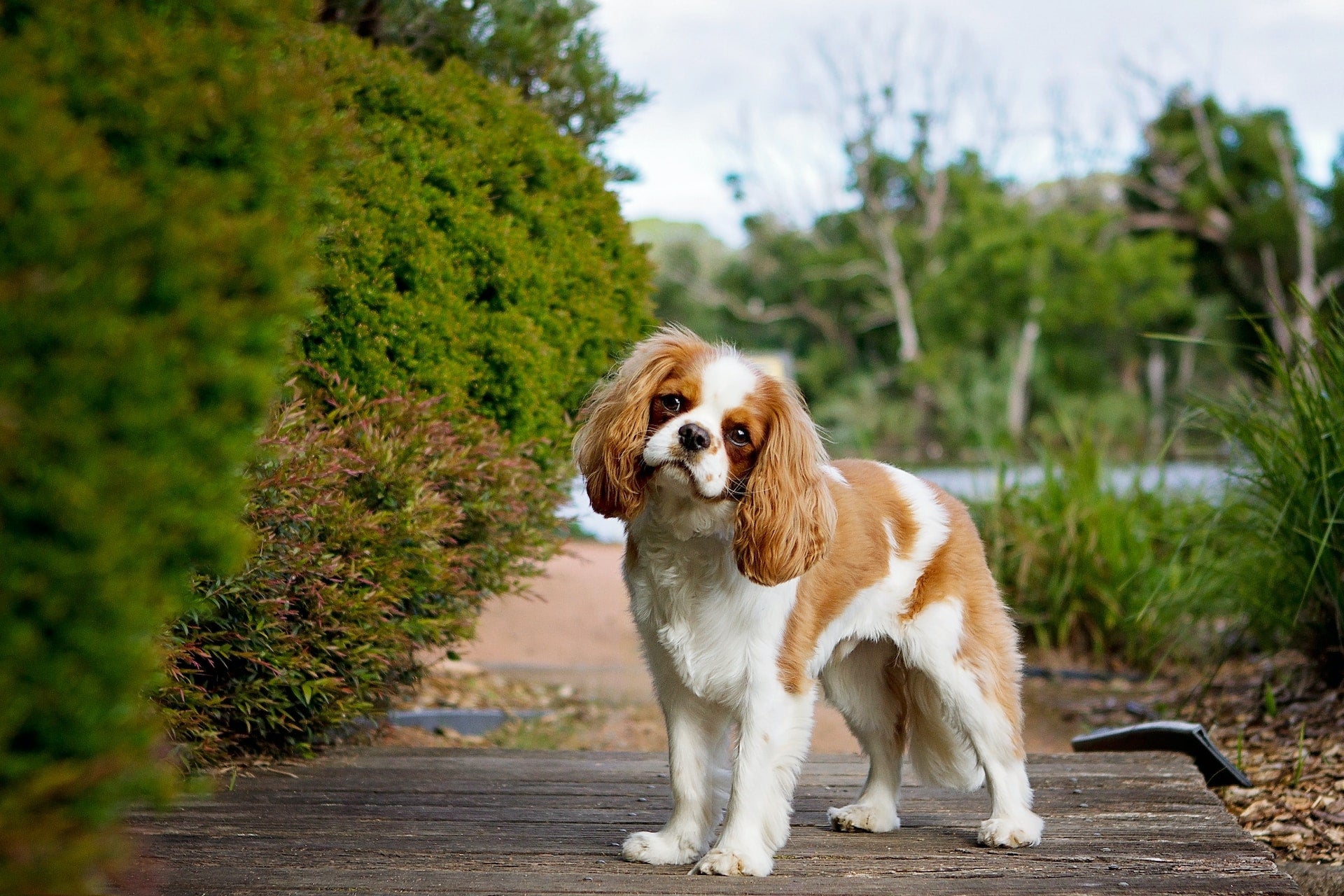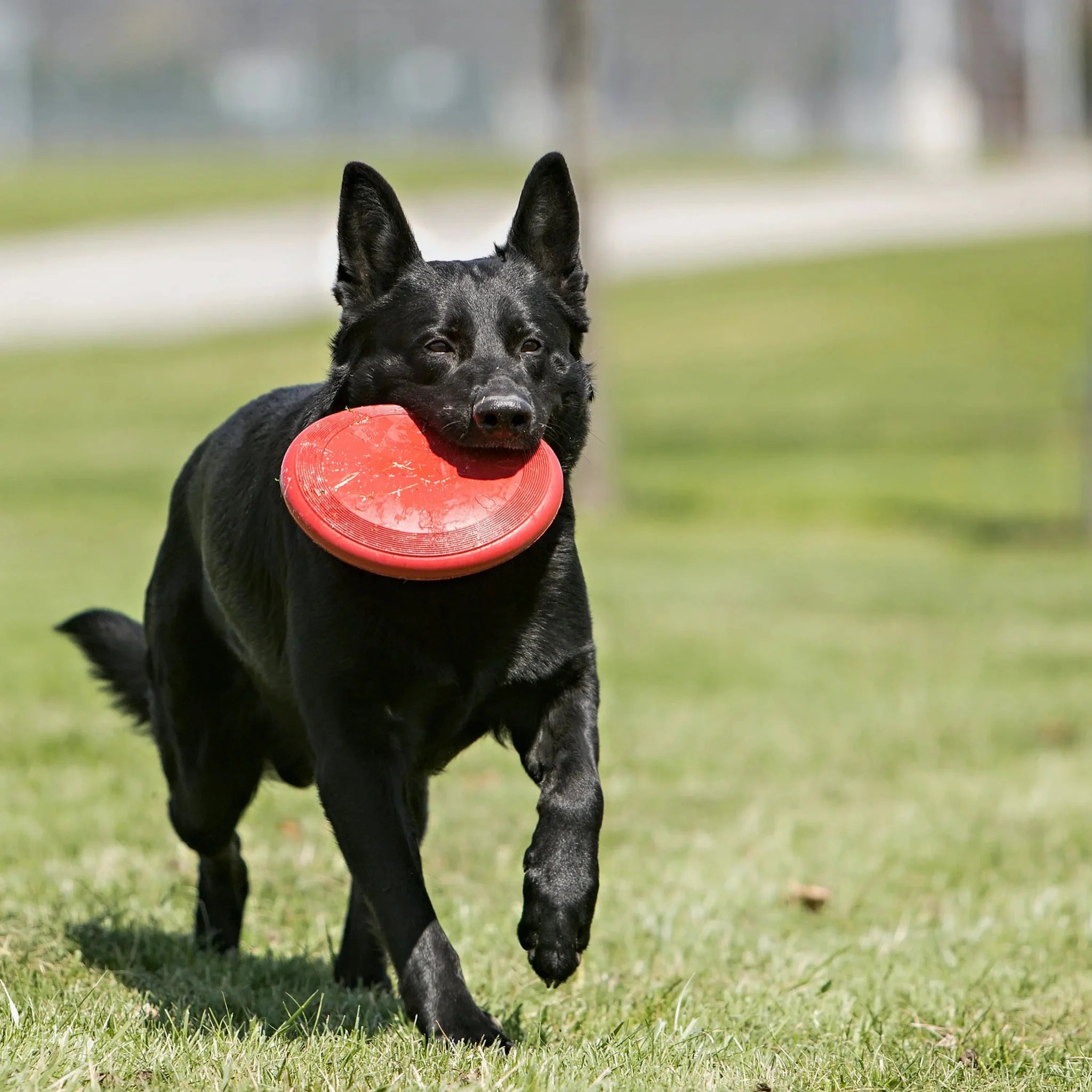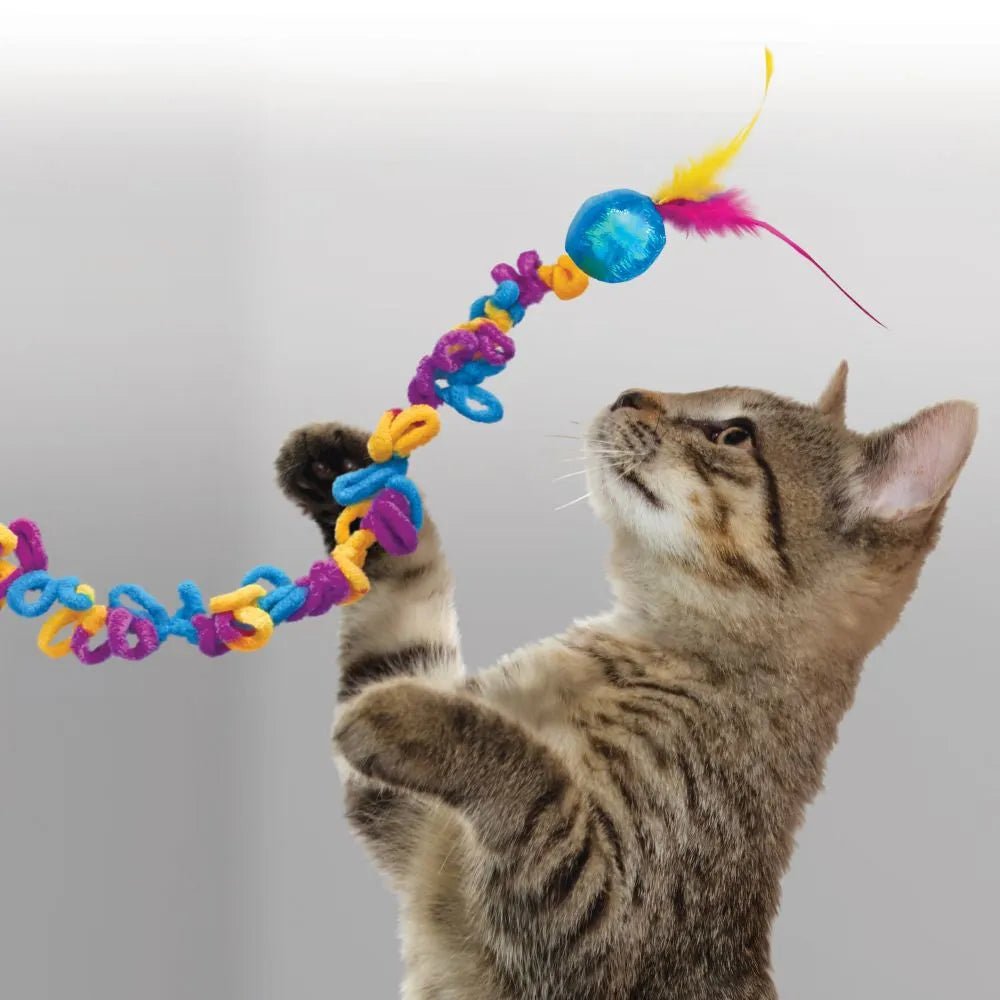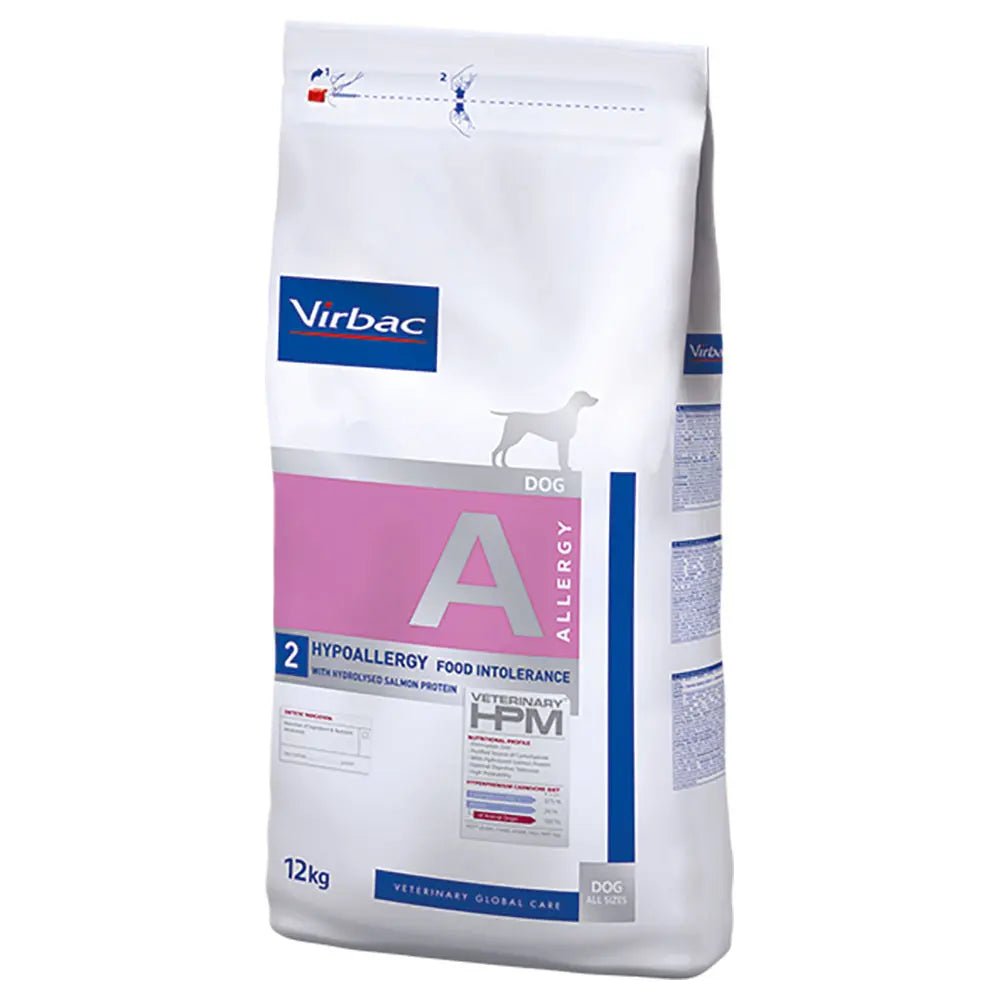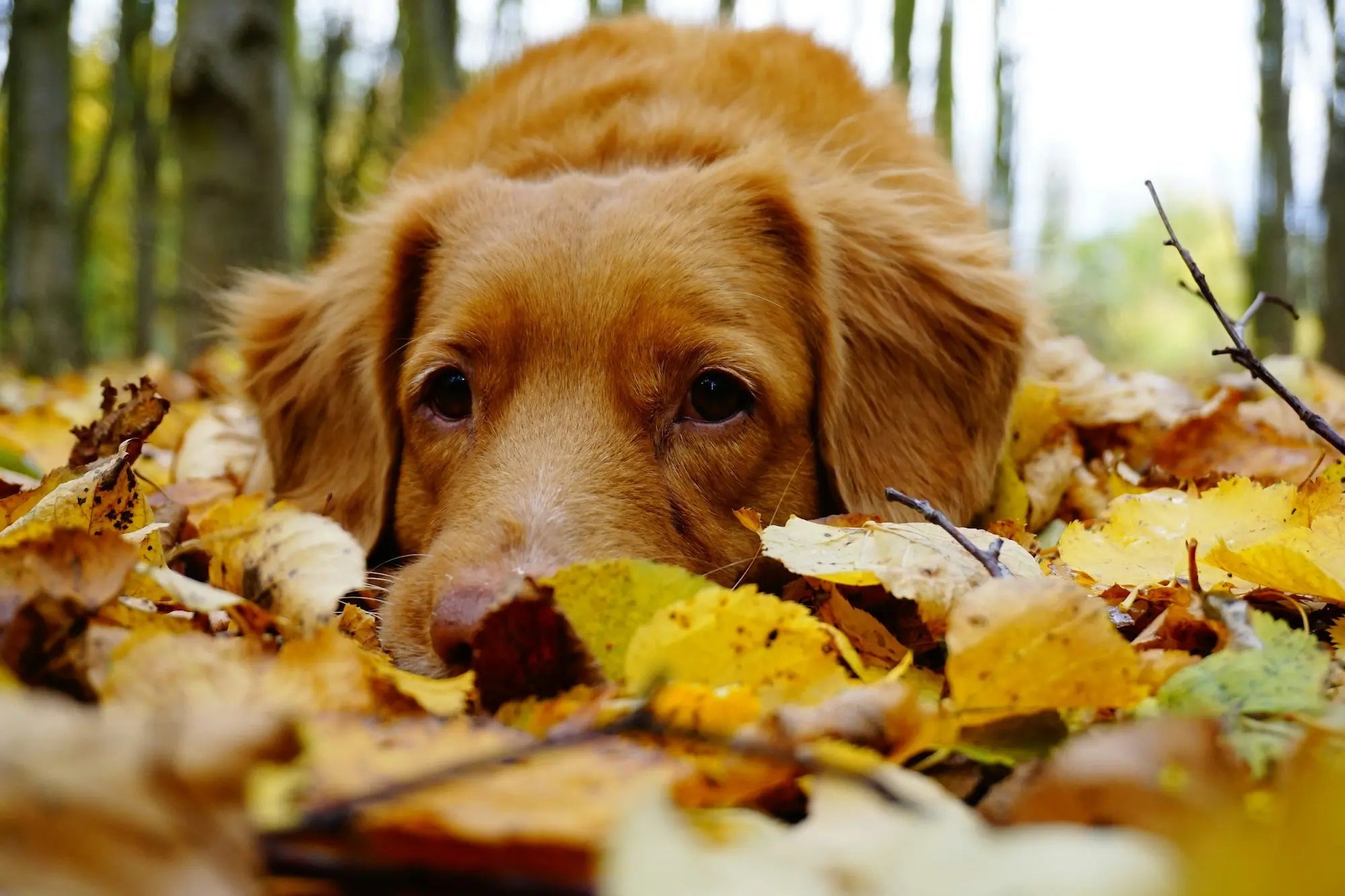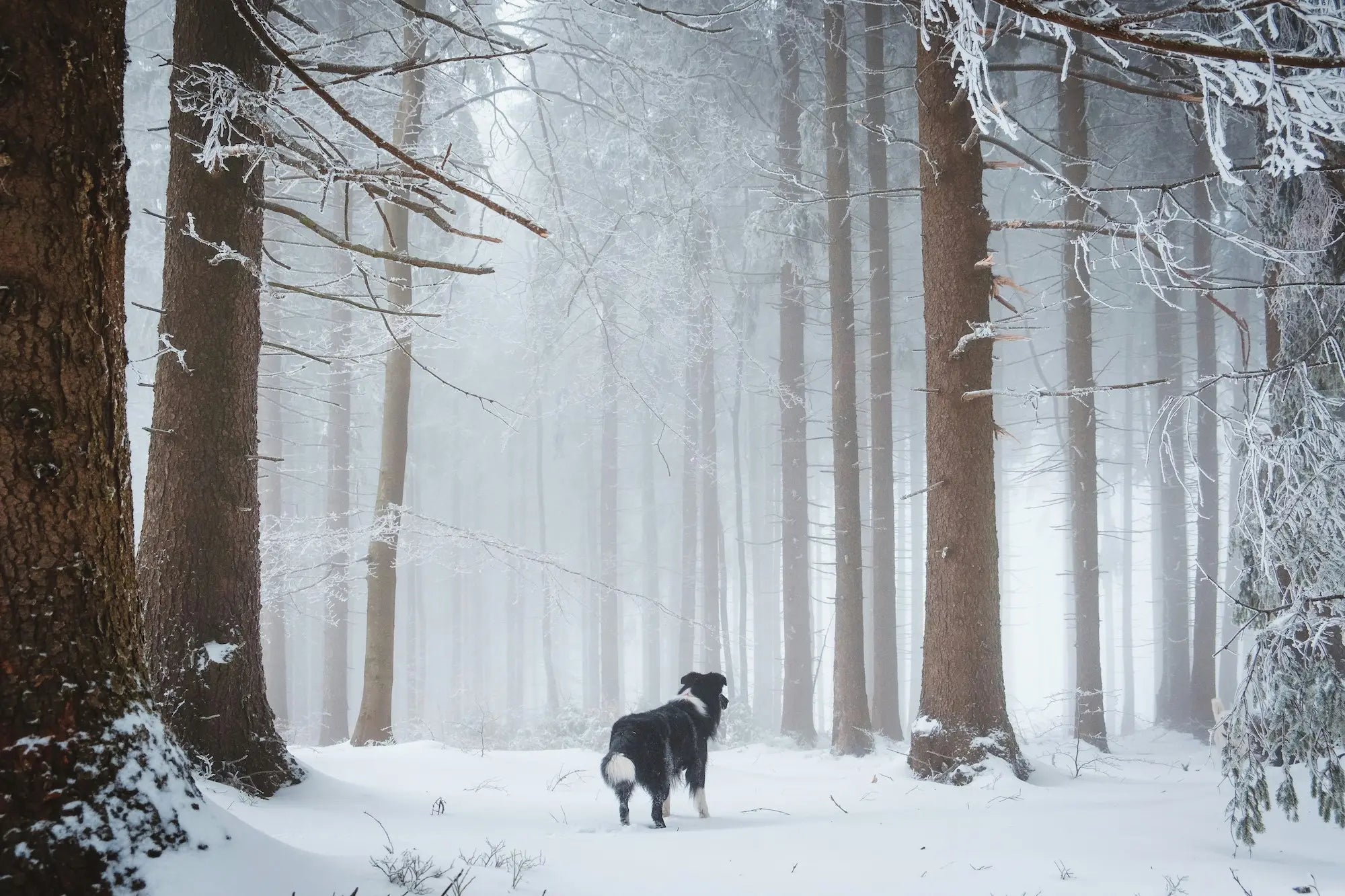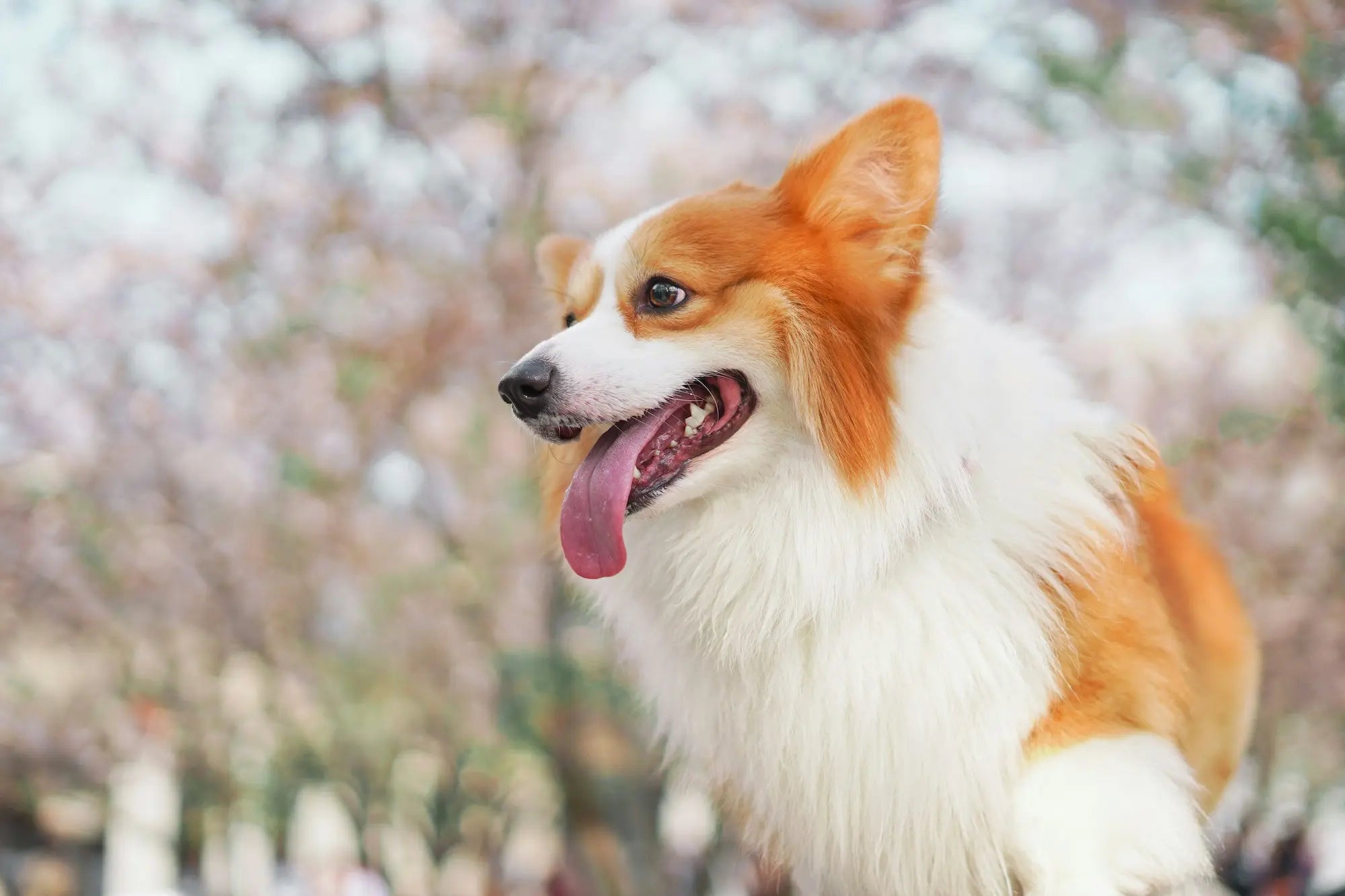The Cavalier King Charles Spaniel is a popular family and companion dog that has won the hearts of many with its gentle, friendly and affectionate nature. The breed is known for its elegant appearance, large, dark eyes and silky coat, but it is primarily its personality that makes it a beloved companion in many homes.
race facts

Family friendly

Activity level

Fur care

Training needs

Clearing

Size
Facts about the breed
The Cavalier King Charles Spaniel – often simply called the Cavalier – is a small, elegant breed of dog that originated in England. It takes its name from King Charles I (1600–1649) and his son, Charles II, who were both very fond of this type of small spaniel. King Charles II was particularly known for being inseparable from his dogs, and this laid the foundation for the breed’s strong association with the English court.
The name “cavalier” also refers to the royalists – supporters of the monarchy – during the English Civil War. These were called “cavaliers”, and the royal origins are still an important part of the breed’s identity.
Originally, the Cavalier was used as a hunting dog, especially for small game hunting and retrieving. Over time, however, the breed developed more towards being a companion dog, and today the Cavalier is primarily known for its devoted, calm and social nature. This has made it one of the most popular companion dogs in many countries, including Norway.
What can you expect as an owner of a Bolognese dog?
Personality
Personality
The Cavalier King Charles Spaniel is a very cuddly, playful and social dog that loves to be with people. The breed is known for its gentle and trusting temperament, and it is usually easy to handle – for both new and experienced dog owners. A Cavalier does not like being left alone, and is not suited to a life in a kennel or in a home where it has to be alone a lot. If given the choice, it would prefer to follow its family throughout the day.
Loving, fearless and curious, the Cavalier fits well into most homes. It usually has a very good relationship with children, and it usually gets along well with other dogs and pets. However, it is important to remember that young children should never be left alone with a dog, regardless of breed or temperament. Good supervision and training of both children and dog are essential to ensure safe and good interactions in the home.
With its loyal and loving nature, the Cavalier King Charles Spaniel is an ideal family dog – as long as it is allowed to be part of the community and live close to its people.
Activity level
Activity level
Don't be fooled by the Cavalier King Charles Spaniel's small, elegant body - this is an active and engaged breed that greatly enjoys physical activity. Although known as a companion dog, it has a medium to high need for exercise and mental stimulation to thrive.
The Cavalier enjoys long walks and loves being outdoors with his family. If he doesn't get enough exercise, he can easily put on weight, which can lead to health problems. It's therefore important to balance his food intake with daily physical activity.
Training
Training
The Cavalier King Charles Spaniel is a friendly and cooperative dog, and everyday obedience can often be learned without much difficulty. However, the breed can be somewhat independent and easily distracted, which means it is not necessarily one of the easiest to train – especially if training becomes monotonous or motivation is lacking.
To get good results with training, it is important to be consistent, patient and clear. The dog responds best to positive reinforcement , such as rewards with treats, praise or play. Gentle training methods give the best results - harsh or strict methods can weaken motivation and confidence.
Although basic obedience can take some effort, the breed is well-suited to succeed in a variety of dog activities. The Cavalier often does very well in agility , tracking , rally obedience , and freestyle – as long as the training is enjoyable and varied. It loves to be involved and use both body and mind, and training can be a great way to strengthen the bond between dog and owner.
Health
Health
Weight and size
The Cavalier King Charles Spaniel is a small, elegant breed with harmonious proportions. The weight is normally around 5.5 to 8 kg . A male dog has a shoulder height of approximately 32–33 cm , while bitches tend to be somewhat shorter and more lightly built.
Lifespan
The breed has a life expectancy of 10 to 15 years , but this depends on lifestyle, genetics, health monitoring and diet, among other things.
Hereditary diseases
The Cavalier King Charles Spaniel is unfortunately predisposed to several hereditary health challenges. Some of the most well-known are:
- A common heart defect where the heart valve does not close tightly, which over time can lead to heart failure.
- A painful condition in which fluid-filled cavities form in the spinal cord, often associated with skull deformities.
- A condition in which the kneecap slips out of position, which can lead to pain and lameness.
- The breed may be predisposed to corneal inflammation and other eye disorders.
Dental health
The Cavalier is also prone to developing tartar , and regular brushing is therefore recommended – preferably daily – to maintain good oral hygiene and prevent gingivitis and tooth loss.
Good food, regular health checks, a healthy weight and proper care are important to ensure a long and happy life for the breed.
Fur
Fur
The Cavalier King Charles Spaniel has a long, silky coat that gives the breed an elegant and soft appearance. The coat is slightly wavy and should not be trimmed or clipped except around the paws to keep them neat. Although the coat is considered relatively easy to care for, it requires regular brushing , preferably several times a week, to prevent tangles and keep the coat clean and shiny.
Especially behind the ears, where the fur is softer, tangles can easily form. Therefore, these areas should be checked and groomed regularly. The breed sheds some , especially during the transitions between seasons.
Cavaliers have floppy ears , and it is important to dry them well after a walk in the rain or swimming to prevent fungus and skin problems in the ear canals. Regular ear checks and cleaning are recommended.
The coat does not provide particularly good protection against cold or moisture, and the breed is therefore not well equipped for harsh winter weather. The use of a dog blanket in winter and in the rain is recommended, especially on cold and wet days.
Cavaliers come in several beautiful color variations:
- Pearly white ground color with chestnut brown markings.
- Black and white with tan details.
- Solid mahogany red.
- Black with tan markings.
Each color variant has its own distinctive expression, but all share the same gentle and loving nature that characterizes the breed.
Food and nutrition
Food and nutrition
When choosing food for a Cavalier King Charles Spaniel, it is important to consider the dog's lifestyle, activity level and health needs . The breed has certain characteristics that make it advantageous to choose a food specifically designed for small or short-nosed dog breeds. Such foods often have smaller and more adapted kibbles that make it easier for the dog to chew and digest the food.
Many specialty foods for small dogs are also formulated with nutrients that support heart function , which is important for Cavaliers since the breed is predisposed to heart problems such as mitral valve disease. These foods often contain taurine, EPA, DHA, and antioxidants that contribute to heart health.
Cavalier King Charles Spaniels tend to gain weight if they are overfed or under-exercised. Therefore, it is important to keep portion sizes in check and avoid too many treats between meals. Regular weighing and body condition assessment will help you detect weight gain early.
A balanced diet combined with daily exercise, regular teeth brushing and fresh water will help keep your dog healthy, energetic and in good shape throughout his life.
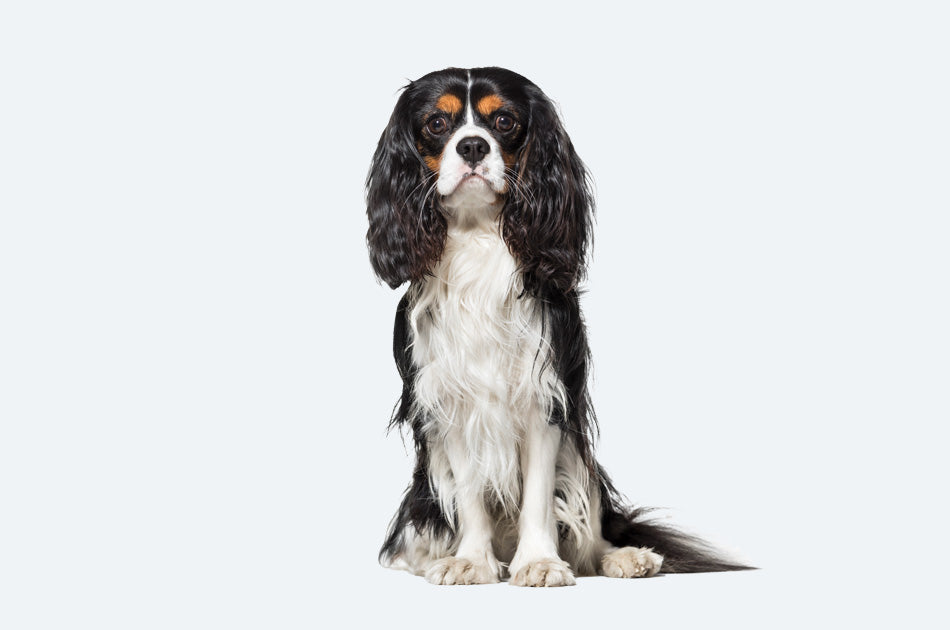
Cavalier King Charles Spaniel
The Cavalier King Charles Spaniel is a breed that has been in the spotlight due to serious hereditary health problems, especially heart defects (mitral valve disease) and neurological disorders (syringomyelia). These challenges led to the Norwegian Animal Protection Association taking legal action in 2020 against, among others, the Norwegian Kennel Club and the Norwegian Cavalier Club. The case concerned whether further breeding of the breed is in violation of the Animal Welfare Act, Section 25. The Supreme Court issued a ruling in October 2023 and concluded that further breeding of the Cavalier King Charles Spaniel as it is carried out today is illegal, as the disease burden is considered too high.
At the same time, the ruling opened up the possibility of developing a crossbreeding project, where the goal is to preserve the Cavalier's appearance and temperament - but without the serious hereditary diseases. The ruling states that if such a project is carried out with documented health improvements, it will not necessarily be in violation of the law. However, the ruling does not allow parallel breeding of today's Cavalier lines alongside the crossbreeding project, which makes the project groundbreaking and demanding.
Soon after the verdict, the Norwegian Cavalier Club (NCk) began to survey the interest in a crossbreeding project among breeders. The results showed clear support for continuing the breed within the framework of a health-enhancing project. At the same time, the Norwegian Kennel Club (NKK) secretariat began work on assessing the health, legal and social aspects of the project. The latter involves consideration for the club, breeders and the general breeding community. Both NKK and NCk are aware that strict health requirements can reduce support, and the project must therefore balance professional requirements with realistic expectations.
A joint project group was established with representatives from NCk and NKK, and also met with the Norwegian Food Safety Authority for clarifications of principle. In December 2023, NKK's executive board decided to give the green light for a crossbreeding project (case 186/23). The main framework includes, among other things:
- Project dogs of the Cavalier breed must have SM grade 0 or 1 (scan for syringomyelia/chiari malformation).
- The heart program for Cavaliers should be followed, with some exceptions for crossbreed dogs.
- All dogs in the project must be clinically healthy, have a good temperament, and their health status must be registered in DogWeb.
- NKK has overall responsibility, while NCk is responsible for the details of the project plan, which is approved by the Health Committee (SU).
- All registration in the project (F0–F4) is free of charge in NKK's systems.
In January 2024, NCk approved the project at an extraordinary annual meeting. NKK's Health Committee approved the start of the project in February 2024 (case 03/24). They also clarified that their role is to assess the project professionally, not to function as a steering group.
What does this mean for those of you who want to buy a Cavalier?
Currently, breeding the breed as it has traditionally been practiced is not legal. This means that if you are looking to buy a Cavalier King Charles Spaniel in the future, you should check to see if the dog comes from an approved breeding project. This will ensure that you are getting a dog from lines with documented better health, and that you are not contributing to illegal or irresponsible breeding.
Regardless of breed choice, the following advice applies:
- Choose a breeder who can document health examinations and breeding work.
- Ask for pedigree and information about the parent animals.
- Be critical of frivolous advertising and puppy sales without health papers.
By being thorough in the process, you contribute to better animal welfare – and give yourself and your dog the best foundation for a healthy and happy life together.


